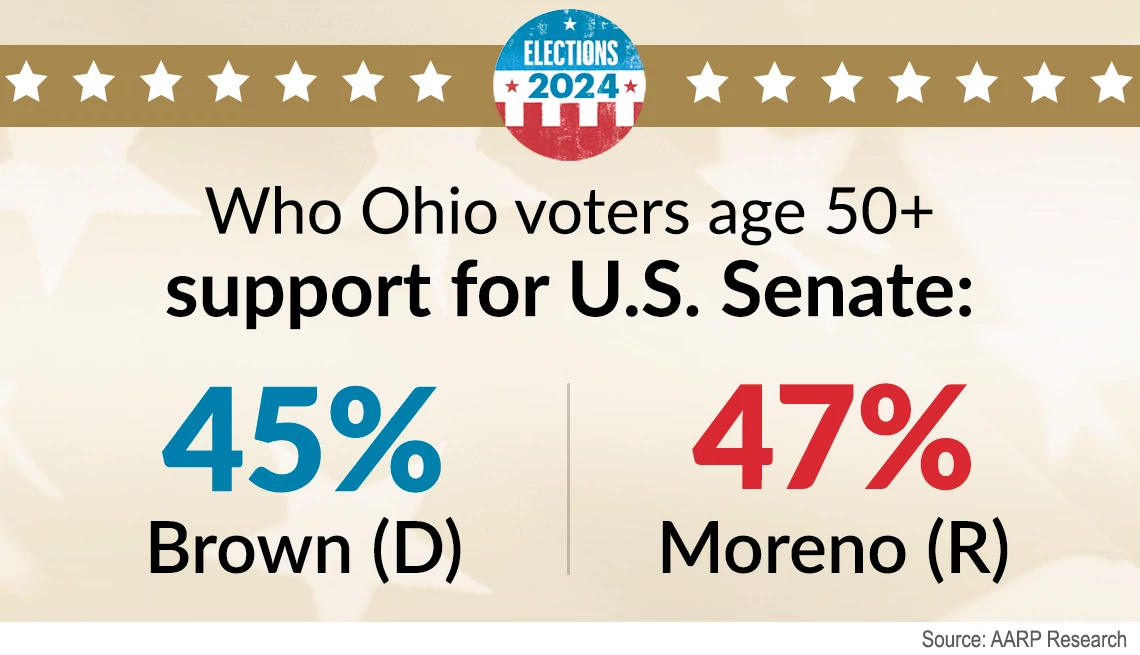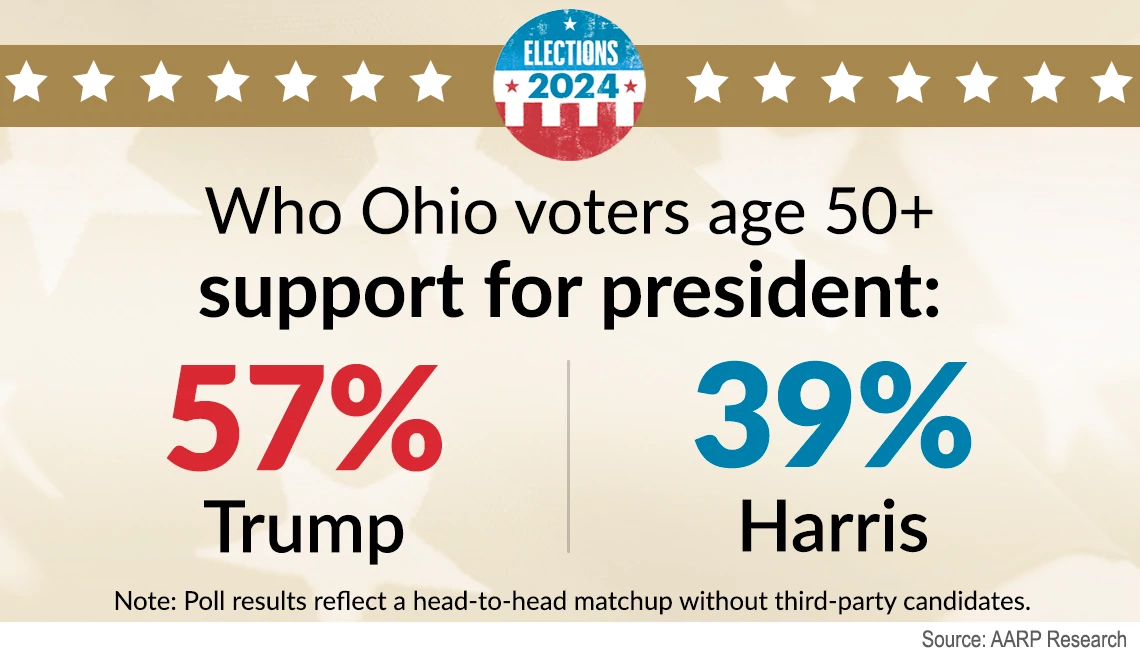AARP Hearing Center


In the tight race for the U.S. Senate seat in Ohio, voters favor incumbent Democrat Sherrod Brown over Republican challenger Bernie Moreno, but only by four percentage points. When the lens moves to voters 50-plus, the race flips and Moreno takes a slight lead, according to an exclusive AARP poll released today.
The survey shows Brown ahead of Moreno 46 percent to 42 percent among all Ohio voters surveyed. Among voters 50-plus, however, Moreno leads Brown by just two percentage points. The outcome of the race could help determine the overall balance of power in the U.S. Senate.
Pollsters interviewed 1,384 likely Ohio voters about the U.S. Senate and presidential races and about the issues motivating them to vote. The bipartisan polling team of Fabrizio Ward and Impact Research conducted the AARP-commissioned survey from July 23 through July 28.


Bob Ward, a partner with Fabrizio Ward, said older Ohio voters are more likely to support candidates who champion policies to help older adults as they age.
“The Senate race in Ohio is a toss up among voters 50-plus,” Ward said. “If a campaign wants to appeal to older voters, they need to be talking about issues like supporting family caregivers and supports to allow seniors to age at home."
When it comes to the race for president, more Ohio voters say they plan to cast their ballot for former President Donald Trump, a Republican, than for Vice President Kamala Harris, a Democrat, according to the AARP poll.
Among Ohio voters of all ages, 52 percent favor Trump, compared with 42 percent for Harris, a 10-point spread. That lead widened to 18 points among voters 50-plus, with 57 percent for Trump compared with 39 percent for Harris. Black voters over 50 overwhelmingly prefer Harris, 87 to 8 percent.


Harris is now the presumptive Democratic nominee for president after President Joe Biden announced July 21 that he wouldn’t seek reelection and endorsed her.
When pollsters asked voters who they would support in a race between Trump, Harris and third-party candidates, including Robert F. Kennedy Jr., 48 percent of voters favor Trump, 39 percent support Harris, and 9 percent favor Kennedy, who has not yet gained access to the Ohio ballot.
Jeff Liszt, a partner with Impact Research, said the poll results indicate Ohio voters could split their tickets in November, rather than voting along party lines. Liszt noted that Trump is ahead in the state at the top of the ticket, while in the U.S. Senate race, Democrat Brown is up over Republican Moreno among voters of all ages.





































































More From AARP
AARP Exclusive Poll: Trump Leads Biden with Older Voters in Wisconsin
Nine points separate the two candidates among voters 50-plusOlder Voters Will Decide the 2024 Elections
Americans 50-plus want politicians who care about a diverse array of issues8 Things to Know About Election Disinformation and AI
Artificial intelligence spreads, amplifies falsehoodsRecommended for You